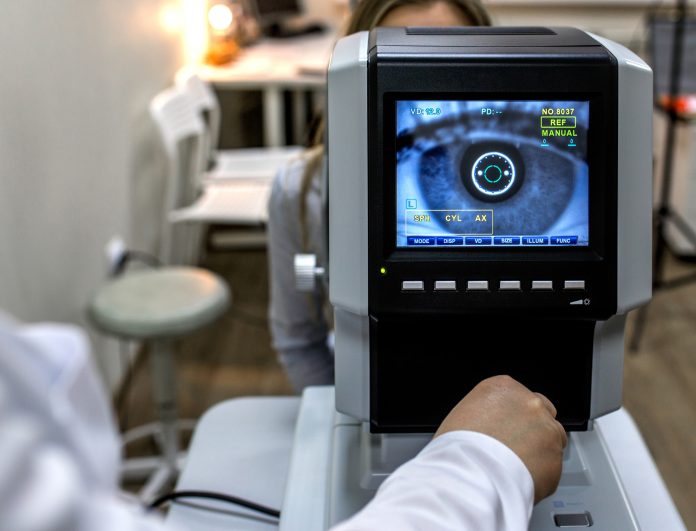New 3D eye scans may hold the potential to track chronic kidney disease in the early stages without symptoms being present
Researchers at the University of Edinburgh have discovered that 3D eye scans may hold the key to revolutionising the monitoring of kidney health. The study, funded by Kidney Research UK and supported by Edinburgh Innovations, reveals that highly magnified retina images, taken using optical coherence tomography (OCT), can provide vital clues about kidney function.
7.2 million people in the UK living with chronic kidney disease
Chronic kidney disease
Chronic Kidney disease is known for its asymptomatic early stages, making early detection of it very challenging. Screening tests often fail to detect the condition until nearly half of the kidney function has been lost.
This new 3D approach, however, offers a non-invasive and quick method to monitor kidney health by examining changes to the retina. The eye is a unique gateway to understanding microvascular circulation, a key process often affected by kidney disease. Using OCT scanners, similar to those found in most high street opticians, researchers analysed images from 204 patients at different stages of kidney disease, including transplant recipients, alongside 86 healthy volunteers.
The results found that patients with chronic kidney disease exhibited thinner retinas, and this thinning progressed as kidney function declined. These changes were reversible when kidney function was restored following a successful transplant, with patients experiencing a rapid thickening of their retinas after surgery.
With the increasing prevalence of kidney disease, particularly driven by conditions such as diabetes, high blood pressure, and obesity, the potential impact of this technology is significant. With further research, routine eye checks could become a tool for early detection and monitoring, enabling lifestyle changes to mitigate risks and prevent complications.
The technology, supported by Heidelberg Engineering’s imaging platform, has clinical applications and holds promise for drug development. Measuring changes in the retina could offer insights into how the kidney responds to potential new treatments.
Detecting future kidney disease
The researchers caution that further studies, including longer-term clinical trials involving larger patient groups, are necessary before the technology can be routinely used.
Dr Neeraj (Bean) Dhaun, Professor of Nephrology at the University of Edinburgh’s Centre for Cardiovascular Science, said: “We hope that this research, which shows that the eye is a useful window into the kidney, will help identify more people with early kidney disease – providing an opportunity to start treatments before it progresses.
“It also offers potential for new clinical trials and the development of drug treatments for a chronic disease that, so far, has proved extremely difficult to treat.”
With an estimated 7.2 million people in the UK living with chronic kidney disease costing the NHS around £7 billion annually, the benefits of this discovery are immense.








